Our introduction to Cisco UCS
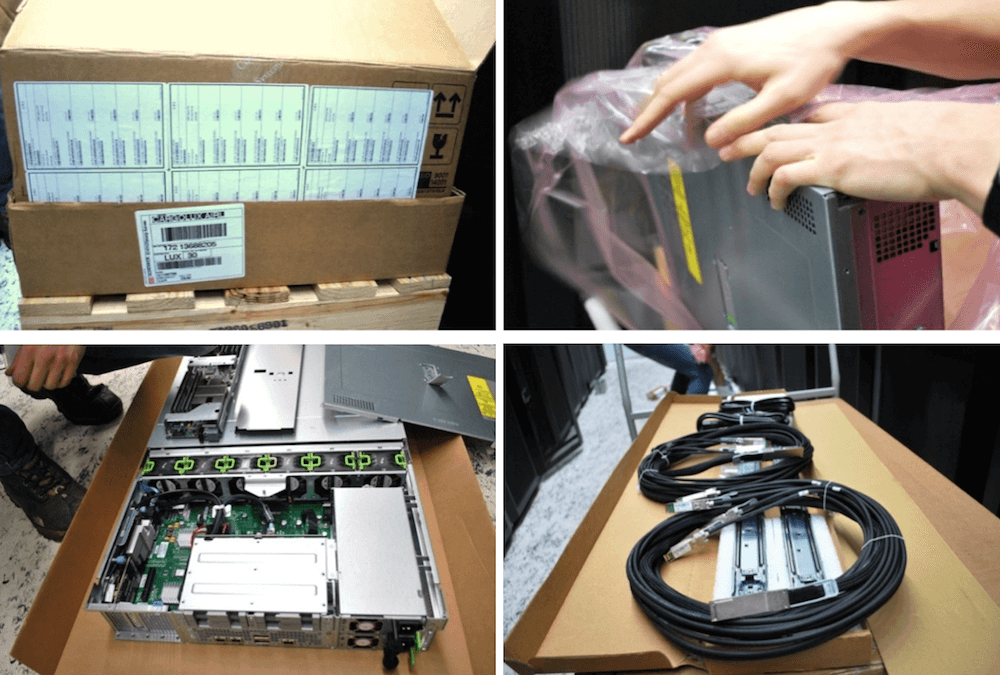
The Cisco United Computing System (UCS) is a platform for modern data centers that combines computing and network resources, access to storage systems and virtualization tools into a single system and can significantly reduce the cost of operating data centers. It combines high-speed network infrastructure based on 10GE and Intel's x86 server architecture. Cisco UCS makes it easy to deploy computing resources and flexibly change workloads.
Let's look at the models with which we have already met.
')
A huge pile of Cisco-inscribed boxes somehow came to IT-GRAD . They contained the 5108 Blade Chassis chassis, four UCS B200 M3 blades and two UCS 6248UP Fabric Interconnect switches.
The first was unpacking the blade servers - here they are:

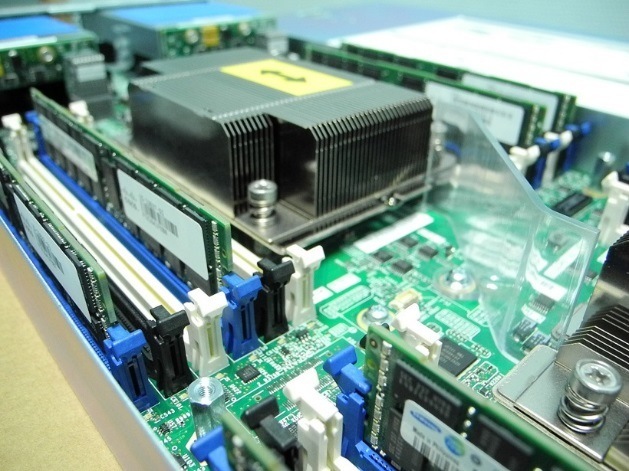
Inhabited the largest box turned chassis. It takes up a 6U size and can hold 8 blades of half width or 4 full blades.
On the rear panel there are 8 fans and 2 network modules:
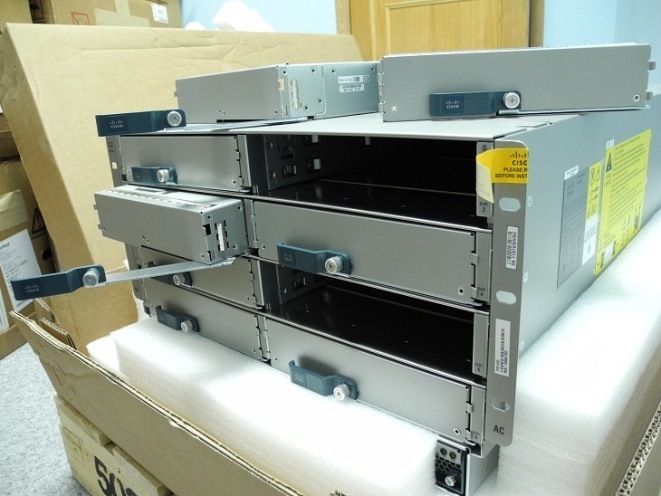
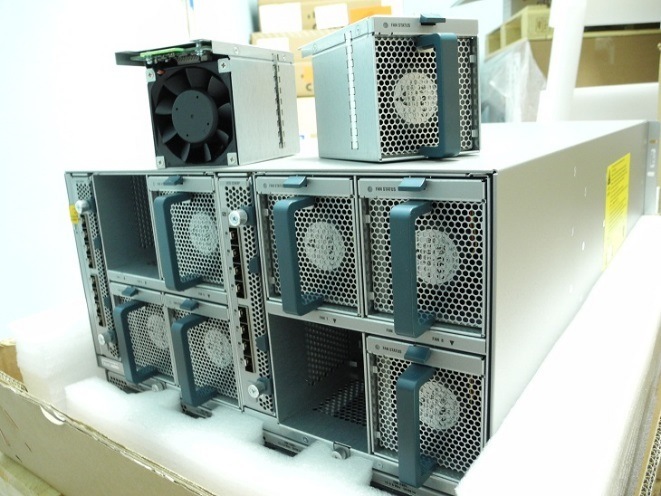
The UCS 6248UP Fabric Interconnect central switch was unpacked last:
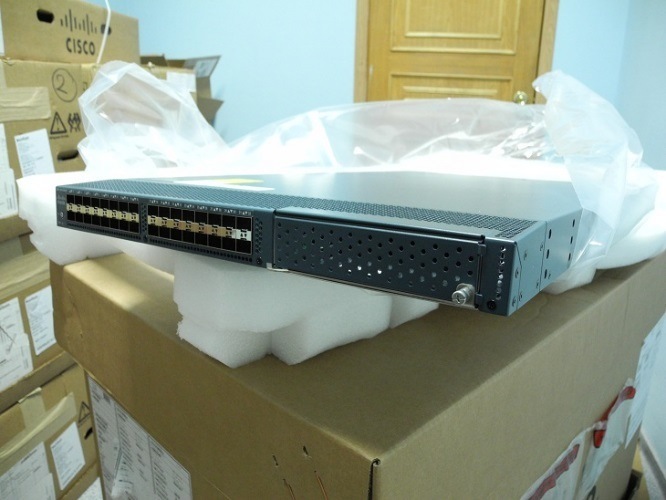
You can look at the detailed specification and parameters of the UCS system components via this link, and the full version of unboxing in our blog on Habré.
That's interesting, in September 2014, Cisco announced a new series of UCS servers. We are now talking about modular M-series servers.
We are trying to monitor the state of the infrastructure, and for this very reason, Cisco UCS M4308 has recently arrived at us. We offer you the unpacking of this wonderful device.
As usual, start with the equipment from the box - here it is:
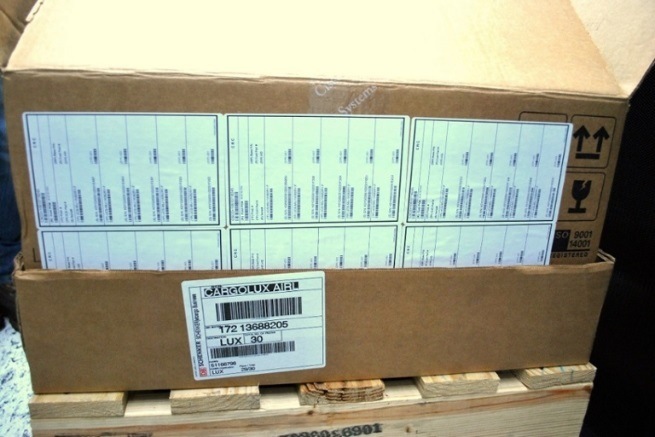
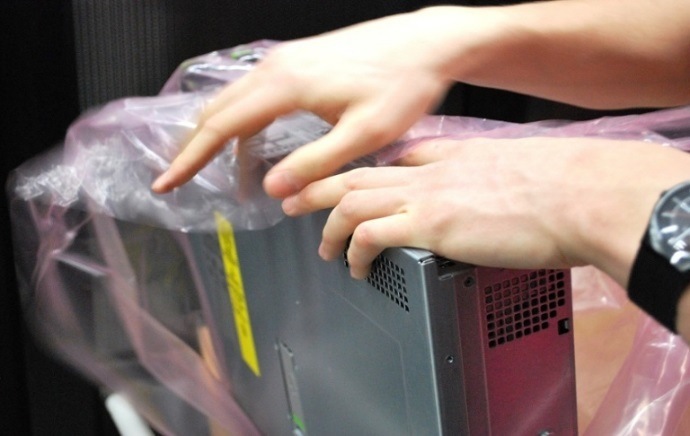
The server itself is additionally wrapped in a package to prevent moisture and dust from entering. Reaching the equipment, in addition to the server, we found a set of mounting hardware, the necessary cables, rails and manual.


Before us appeared model Cisco UCS M4308. The letter M in the title means "modular".
Here is the announcement of a series from Cisco ( blog ):
The peculiarity of the series is that the CPU and RAM blocks are separated from other subsystems. In this case, if there is a need to increase the number of cores or memory size, you will not have to install a new full-fledged server with its own power supply units, coolers, controllers, adapters, and so on. It turns out that Cisco UCS M4308 is ideal for cloud computing.
Moreover, these servers use the Virtual Interface Card (VIC) technology and the UCS Manager management system. UCS Manager provides unified management of all Cisco UCS software and hardware components out of the box. The manager supports data center automation functions, simplifying the scaling process and reducing the risks that arise, and also provides policy-based management using templates and service profiles. The UCS Manager management interface can be found here .
The first thing that attracts attention when looking at the M4308 is the chassis, in which there are 8 slots for cartridges. On the reverse side, we see 4 bays for SSD, which are hooked up to a RAID controller, which allows to combine solid-state drives with a total volume of up to 128 TB. Chassis size - 2U.
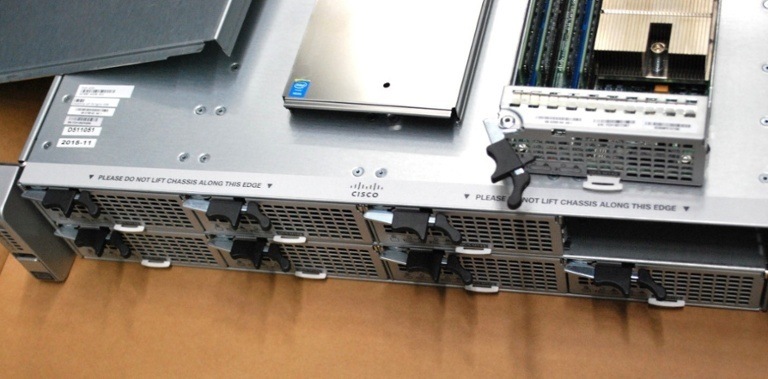
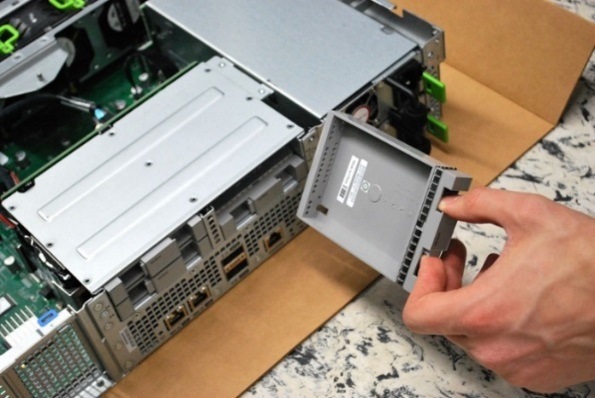
Also, the chassis is equipped with two power supplies, issuing 1400 watts each.
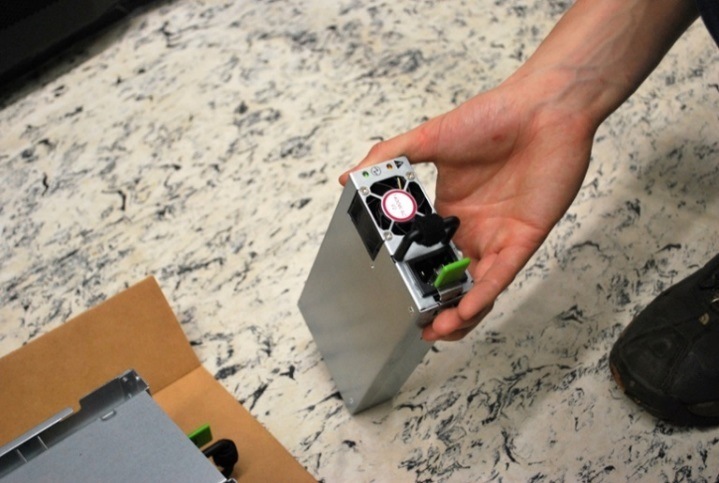
Now let's take a look at the cartridges themselves.
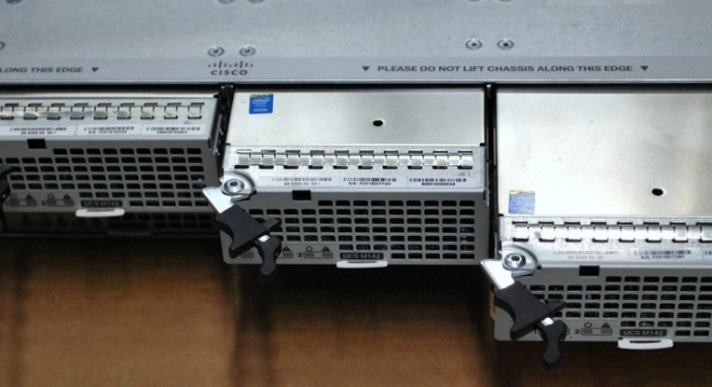

Cartridges are removed with a simple and elegant movement - you need to squeeze the latch and pull. Having got one of them, we found many interesting things inside.

Each cartridge (in our case, this is UCS M142) consists of two server nodes with Intel Xeon E3 1275L processors (8 MB cache and 2.7 GHz), supporting up to 32 GB of RAM. If we talk about the density of computing resources, it is admirable and reaches 8 processors per 1U.

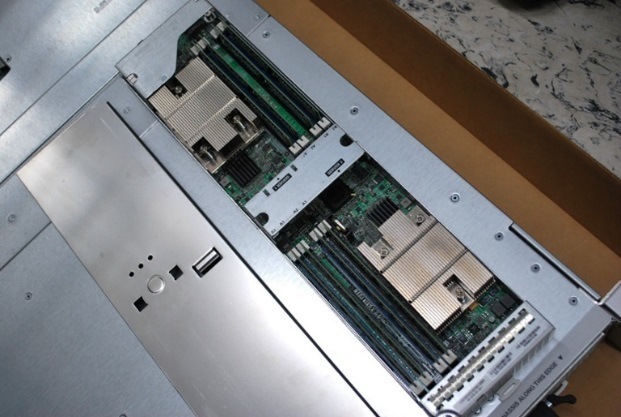
If we talk about the chassis architecture, here we take advantage of Cisco System Link technology, which provides access to shared resources, such as power, cooling, disks, and so on. This technology is hardware-implemented and allows M-series servers to connect modular systems to a single System Link factory to create a combined infrastructure of interchangeable components.
Thus, the application will receive exactly the specified amount of resources from each of the subsystems. Just as the hypervisor distributes resources between virtual machines, the M-series servers share resources at the hardware level.
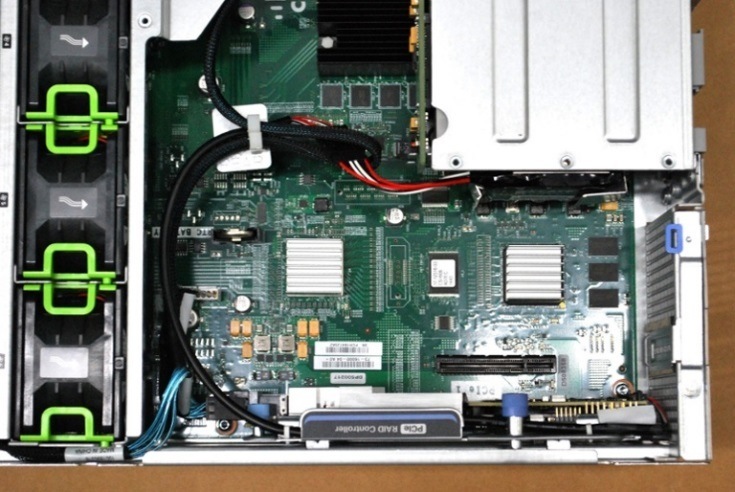
This type of cartridge is intended more for cloud solutions, which causes particular interest on the part of cloud service providers and their customers. Due to its high density of resources and low energy consumption, it is optimally suited for providing high performance of specialized business applications.
PS Even more photos of this device can be found in our blog .
Source: https://habr.com/ru/post/276805/
All Articles